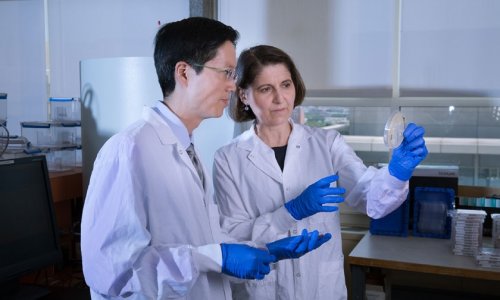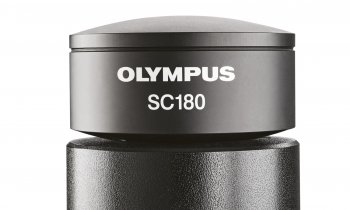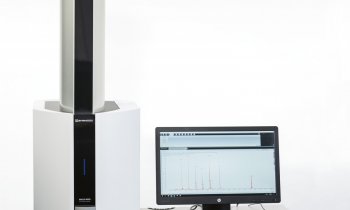Image source: Furtwangen University
News • Microbiome study
Do microscope eyepieces pose an infection risk?
Light microscope for viewing microorganisms such as bacteria and fungi are commonly found in scientific laboratories. A research team from Furtwangen University, the University of Tübingen and Carl Zeiss Vision International GmbH, Aalen, examined more closely their role as potential vectors of infectious pathogens.
„Very little was known about this until now," explains the head of the study, Prof. Dr. Markus Egert, a lecturer in microbiology and hygiene at Furtwangen University. The focus was on the microscope eyepieces because of the intense contact with users' hands and eyes.
The researchers published their findings in the Journal of Clinical Medicine.
Cleaning with isopropanol [...] should be carried out regularly, particularly if different people use the same microscope
Markus Egert
For the study, the oculars of ten microscopes from a university laboratory were tested immediately after a practical class. Bacteria and fungi from all left eyepieces and eye cups were cultivated on various culture media, while all right eyepieces and eye cups underwent comprehensive molecular biological analysis. The tests were carried out before and after they were cleaned with 70% isopropanol for 30 seconds. "We were able to obtain excellent values from up to 1700 living bacteria per cm2, above all from typical skin bacteria such as cutibacteria and staphylococci, but also from environment and water bacteria such as paracocci. We did not find any fungi," said Prof. Egert. The molecular biological tests generally confirmed these findings; in total, 262 different types of bacteria were identified on the oculars tested. With staphylococcus epidermidis, paracoccus yeei, cutibacterium acnes and brevibacterium casei, four potentially pathogenic bacteria were isolated from the eyepieces. These can cause eye conditions such as keratitis or inflamation of the eyelid in sensitive people.
"So microscope oculars definitely have the potential to act as carriers of infectious pathogens. The good news: cleaning with isopropanol reduces the number of germs significantly by 99%. This should be carried out regularly, particularly if different people use the same microscope," concludes Prof. Egert.
Source: Furtwangen University
29.05.2020











